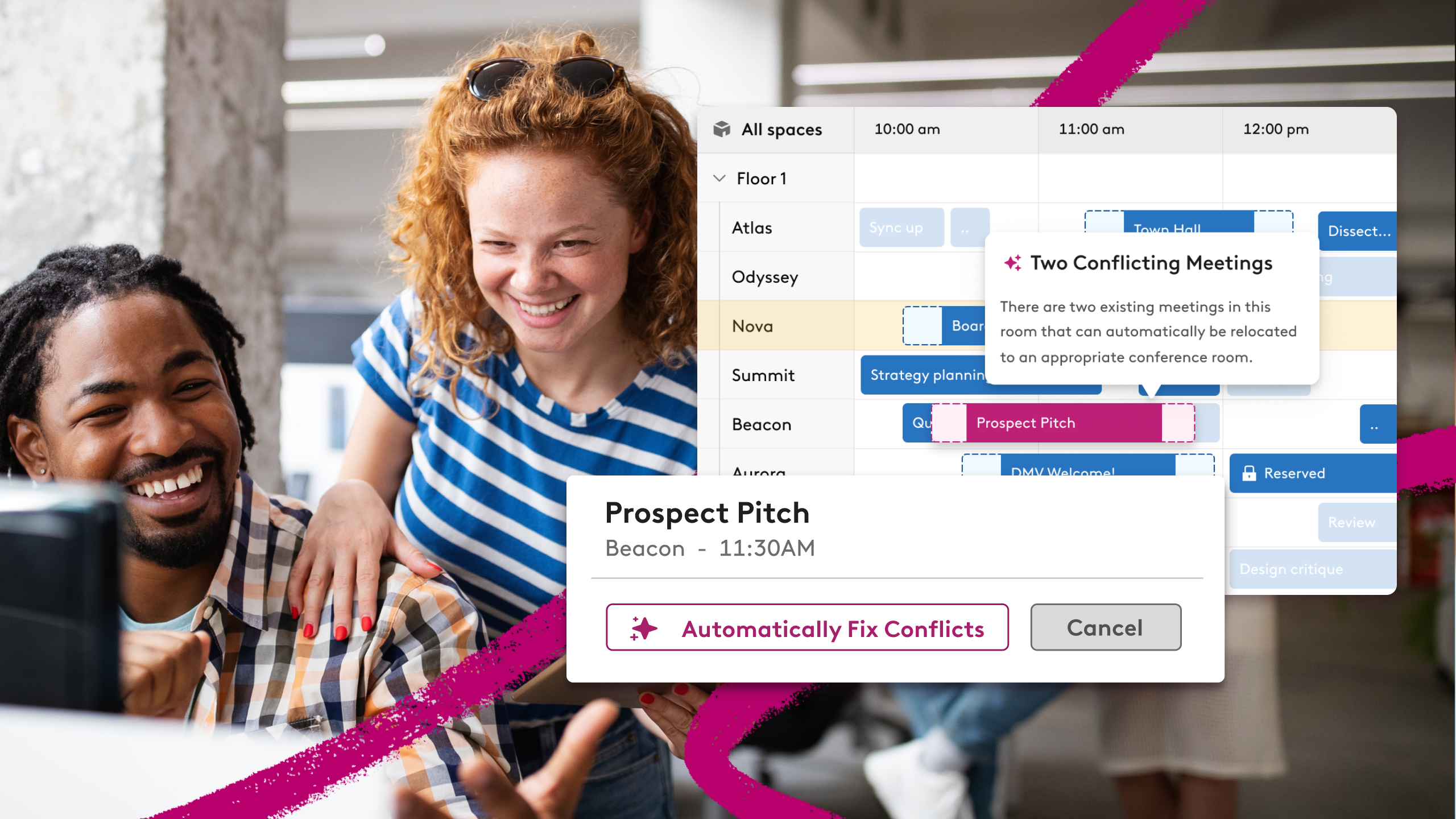Terms you need to know: Desk booking
Desk booking software allows employees to reserve and manage workspaces, and increases office efficiency and flexibility. Here are some key terms to familiarize yourself with.

Assigned seating
Everyone is assigned a permanent seat with no expiration date in mind, usually picked out by a manager or dept. admin. Desks are 1-to-1 with people; employees have the option to add personality to their desks and use them as a home base.
Benching
Desk layout often used in open offices. Employees share one long desk and have minimal barriers between individual work spaces.
Desk hoteling
Advanced reservation; People pre-schedule desks vs. spontaneous reservation, often longer-term (days, weeks, months) With the right policies, hoteling feels similar to hot desking. We’d expect to find setups with rules that align with the spirit of traditional hot desking, e.g. “You can check in the night before.” Basically a seat assignment, but with an end date in mind.
Desk scheduling software
A tool that makes finding and booking a desk a seamless task. Meeting Desk scheduling software can be used in an assigned seating scenario to organize seating charts as well as in a flexible seating environment to empower employees to pick what desk best fits their needs.
Flexible seating vs. Hot desking
First there were cubicles, then there was the open office, now we’re somewhere in the middle. Many modern workplaces try to incorporate a mix of open and closed spaces to accommodate for different personalities, work styles, and tasks. Because many employees don’t sit at desk all day every day, flexible seating was incorporated to account for their mobility during the day and also get more out of a valuable office asset: seats. Flexible seating is an umbrella terms used to talk about hot desking, desk hoteling, reverse desk hoteling, activity based work, flex desking, neighborhoods, zones, domains, and more.
Typically, flexible seating helps when a company is experiencing growing pains and needs more seats or if they notice a significant fraction of their employees don’t need a dedicated seat during the workday. As noted, hot desking falls under the umbrella of flexible seating. Hot desking is when employees can book a desk for a day or even just a few hours during the day. Hot desking is ideal for people who don’t need a desk all day like managers in and our of meetings or traveling sales people only in the office for half a particular day.
Free address
Hot desking is often referred to as free address; workspaces without assigned seating; same-day desk reservations that require employees to keep the space clean for the next employee to reserve
Hot desking
On-demand, same-day reservable desks, requiring people to check in and out. Sometimes also known as free address, flex desking or hot spot desking. Does not allow booking in advance and reservations reset daily.
Resident employee
Employees who spend more than 60% of the time at an assigned desk or at least 5 hours each day. This type of employee usually spends most of their days in heads down, individual work. Writers and software engineers often fall into this category. Also known as a "soloist-style worker"
Reverse desk hoteling
Reverse hoteling is when an employee with an assigned desk offers up their desk to a flexible desking pool for other employees to book. Reverse hoteling is often used when an employee goes on vacation, is out of the office for meetings, or is booked for a day. Once they return, the desk is theirs again just like any other assigned desk. Ex: when Sally’s out on vacation, her desk becomes open to book.
Unassigned seating
Some organizations use an unassigned seating strategy to allow for more flexibility in their workplace. Unassigned seating means there isn't a 1:1 ratio of employees and desks. Oftentimes, employees have unassigned seats when they don't need to have a workstation designated specifically to them for an entire day. Mobile employees (Managers, sales people on calls, traveling employees, or employees who work from home part of the week) are prime examples for the type of employee who could benefit from unassigned seating. Instead of having one desk, employees with unassigned seating could instead use hot desks or hotel desks. Unassigned seating plans are used to improve space efficiency and increase employee autonomy.




